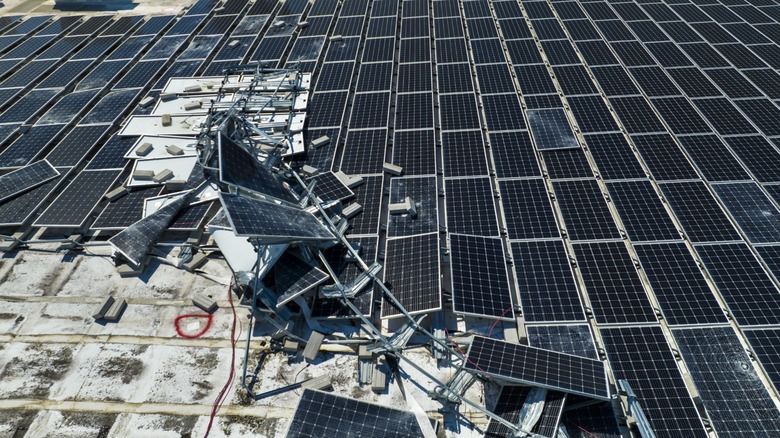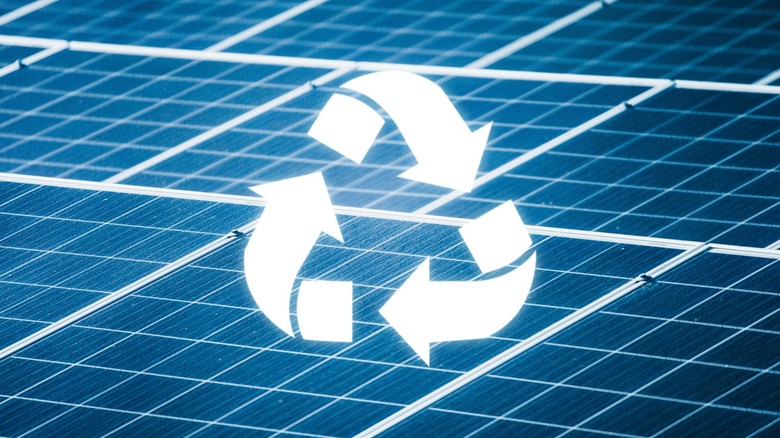What Happens To Solar Panels When Their Lifespan Comes To An End?
Solar panels, like most things in life, die. Usually, the very thing they harvest energy from is what kills them. Solar panels work by using sunlight to knock electrons off atoms in solar cells in a process called the photovoltaic effect. Then, those electrons are forced to flow in a specific direction, thanks to the panel's built-in electric field, thus creating an electric current. Metal contacts connected to the solar cells send this current to an external circuit that can change it into usable power.
But over time, constant exposure to UV rays, heat, and weather takes its toll, and components begin to break down. One common example is when micro-cracks form in silicon solar cells (the solar cell used in the most common type of consumer solar panels) from expansion due to heat and contraction due to cold, interrupting the flow of electrons. The sun's UV rays can also discolor protective layers, reducing sunlight absorption, and metal contacts or wiring can corrode after prolonged exposure to moisture.
Most panels are considered to have reached the end of their life after 25 to 30 years, even though they may still work at reduced efficiency. When this happens, they usually follow one of three paths: they're landfilled, recycled, or repurposed.
Let's take a closer look at what happens to disposed solar panels
Most solar panels, unfortunately, end up in landfills. 10% or less of these panels get recycled, largely due to the high cost of breaking them down and the lack of widespread infrastructure to handle the process. Dumping a panel in a landfill might cost just a couple of dollars, whereas recycling it could run ten times as much. That economic imbalance, combined with limited regulation in many parts of the world, the U.S. included, means the landfill is often the cheaper, easier option.
The problem is, landfilling isn't exactly eco-friendly. While solar panels are made of mostly glass and aluminum, they could also contain small amounts of toxic substances, like lead and cadmium, that could leach into the soil over time. That's why recycling and repurposing are getting more attention, especially as early solar installations are now approaching retirement age.
Solar panels can be recycled, and a significant portion of valuable materials from a panel, including aluminum frames, copper wiring, and possibly silicon wafers, can be recovered and reused. It's currently underdeveloped, but advanced recycling facilities, like the ones being built by companies such as SolarCycle and initiatives supported by the U.S. Department of Energy, aim to change the math and make recycling more economically viable. Repurposing is another growing option. Panels that no longer produce power at peak levels may still be functional. The panels can be reused in off-grid or low-power applications, perhaps, like lights, water pumps, or community microgrids in developing regions.

